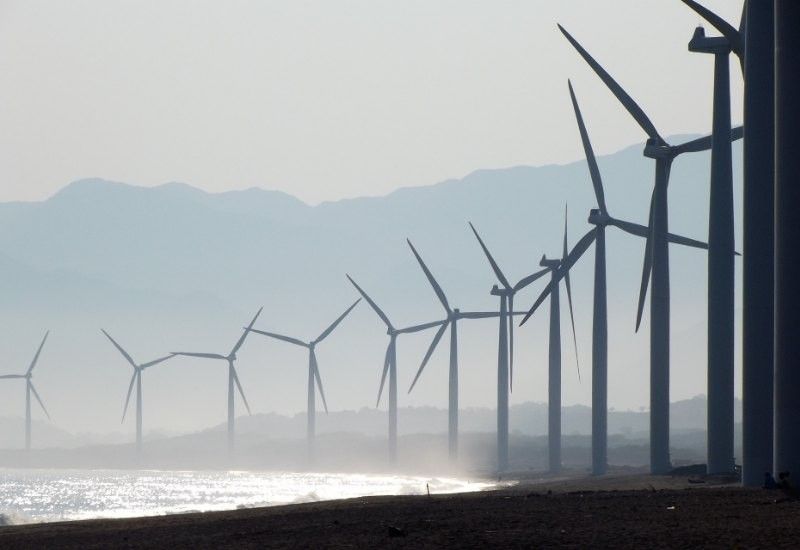COMMENTARY: Is Cebu 100% renewable energy-ready?

MANILA, Philippines — There has been a lot of discussion lately about the Philippines' energy security. It is highly understandable given the country's economic growth rate that currently leads the pack among equally fast-growing ASEAN and Asian economies.
Cebu at the heart of the Central Visayas region and host to Metro Cebu's bustling Mandaue (9% growth), Lapu-Lapu (13.2% growth) and Cebu (8.4% growth) cities has come in focus as well as a vital cog in the country's drive to become an upper middle-income economy, yet highly vulnerable given its energy dependence on neighboring islands.
The spate of red and yellow Alerts for the Luzon and Visayas grid recently has sparked wider discussions about Cebu and the country's energy situation, and the role of renewable energy not only in sustainability efforts to combat climate change but also in securing sufficient and affordable energy supply.
The case of Cebu
Cebu, a bustling region renowned for its natural beauty with bustling economic hubs that are now positioned to become smart cities, stands at a crossroads in its energy journey. But is Cebu really ready to be 100% reliant on renewable energy?
Cebu, like other fast-growing cities globally, still relies heavily on conventional energy sources such as coal and natural gas to meet its electricity demands. While strides have been made in integrating renewable energy sources like solar and biomass into its energy mix, the path to achieving complete renewable energy readiness remains complex.
For wider context, the Clean Energy scenario under the Philippine Energy Plan targets the following mix to be achieved by the year 2040—50% of gross generation to come from renewable energy sources while 26% will be from Liquified Natural Gas (LNG), as the widely accepted "transitional fuel."
For Cebu, as with the rest of the country, getting more and more renewable energy into the power mix hinges on various factors, including advancements in technology, supportive policies, substantial investment, and the readiness of the transmission infrastructure.
While initial infrastructure costs may pose challenges, the long-term implications are promising. Residents could potentially enjoy reduced energy costs (renewable energy comes from one's natural resources thus shielding us from external oil price shocks for example due to global crisis), enhanced energy stability, and contribute to sustainability efforts by curbing carbon emissions.
The timeline for Cebu's transition to 100% renewable energy is uncertain and could span several decades. Meanwhile, recent alerts issued by the National Grid Corporation of the Philippines (NGCP) underscore the urgency of addressing energy shortages. Urgent action is imperative to prevent disruptions in power supply and ensure energy security for residents.
The pragmatic view
Former President of the Cebu Chamber of Commerce and Industry (CCCI), Charles Kenneth Co, offers a pragmatic perspective on Cebu's renewable energy journey.
He highlights the province's geographical limitations compared to regions like Ilocos, where wind and hydro resources are more abundant. Co states for example that Cebu being in the center does not have the benefit of strong wind power having been dissipated by surrounding islands. Neither can hydroelectric power be tapped as Cebu is not blessed with waterfalls, said Co.
Co maintains that the feasibility of harnessing renewable energy in Cebu remains within reach citing the establishment of a solar farm in Bantayan Island. But given the many challenges associated with RE currently due to the geography of Cebu, Co stresses the need for a balanced energy mix that can satisfy Cebu's high growth industries and growing population.
A diversified approach
Coordination between the government and business sectors and power producers is crucial to ensuring an adequate power supply.
In fact, supply from neighboring regions like Leyte, Negros and Mindanao play a vital role in meeting Cebu's energy demands. However, challenges persist due to limitations in power transmission infrastructure, emphasizing the need for greater independence inland within Cebu.
Negros exports surplus solar to Cebu and Leyte during the daytime. However, at night when solar is not available, Leyte steps in to provide power to the rest of the Visayas Grid mostly due to excess from their large geothermal baseload. Though this aids Cebu’s need for energy supply, additional baseload sources like coal is imperative for a secure, self-sufficient Cebu.
Cebu's current reliance on coal power plants is driven by their operational cost-effectiveness and role as a stable base load provider, offering the cheapest option even as the coal plants address emissions with investments in carbon capture and storage technology and by leveraging carbon credits.
Diversification is the order of the day for Cebu by welcoming new base load capacities tapping coal as well as LNG as a transition fuel, until new technologies become available such as nuclear power that is now on the table for all Philippine energy stakeholders.
While Cebu faces challenges on its path to 100% renewable energy readiness, the province's abundant natural resources, including sunlight and biomass, present ample potential for renewable energy development.
Additionally, Cebu's strategic location and robust economy provide a solid foundation for investment in renewable energy infrastructure.
Until then, for a forward-looking region like rapidly growing Cebu, pragmatism is indeed key,
About the author: Dana Gabrielle B. Tautho, MAURP, EnP is a PRC-licensed Geologist and Environmental Planner, holding a Master's degree in Urban and Regional Planning from the University of the Philippines. Dana specializes in geology, developmental work, and environmental and social consulting.She has been deeply involved in several environmental consulting roles, including Environmental Impact Statements and Geohazard Assessments across multiple regions.
- Latest

























